China is stepping up efforts to contain COVID-19 outbreaks ahead of the Chinese Communist Party National Congress, with cases climbing to the highest in almost two months and concerns about widening lockdowns rippling across Shanghai.
The country reported 1,878 cases for Sunday, the highest since Aug. 20, as the week-long National Day holiday saw cases flare among returning travelers. Shanghai posted 34 new local infections, the most in almost three months, with two infections found outside of its quarantine system.
The uptick has seen neighborhoods locked down and buildings barricaded with the green fences that were a feature of the Shanghai’s extended shutdown earlier this year. The Putuo and Changning districts have closed entertainment venues to enhance COVID-19 controls.
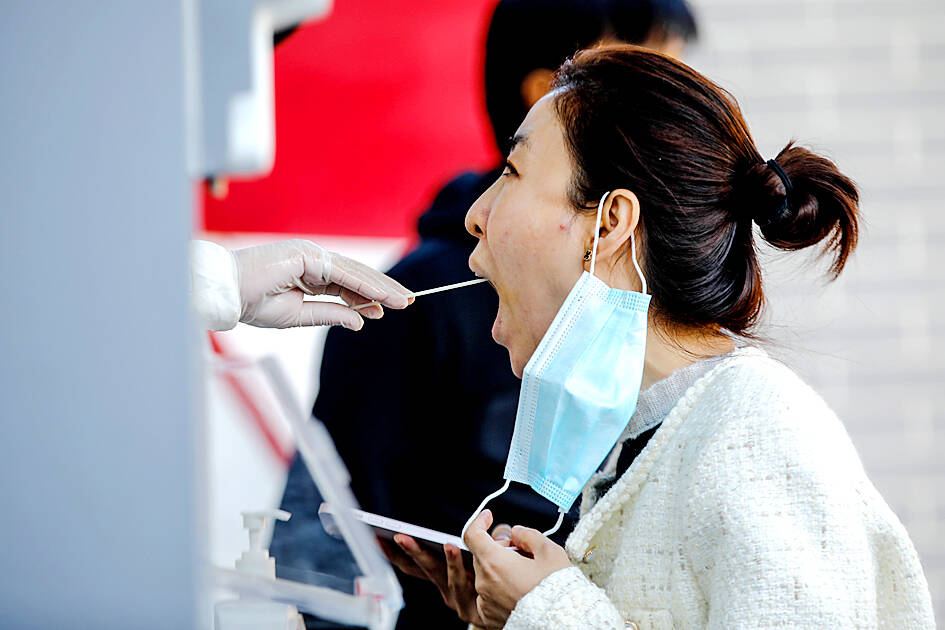
Photo: EPA-EFE
Inner Mongolia, where more than one-third of the country’s infections are found, banned people from entering its capital, Hohhot, starting from yesterday. Residents who need to return have been asked to delay their journey until the outbreak is under control.
In a sign of the tensions in the country, even a city that has no reported infections has gone into lockdown. Yongji, which has 400,000 residents and is in Shanxi Province, went into a three-day lockdown from Friday evening to prevent potential cases in travelers going home after the holiday. The move sparked a raft of criticism from Chinese social media users, who called the officials overzealous.
Local authorities are under pressure to bring COVID-19 flare-ups under control as the party congress, where Chinese President Xi Jinping (習近平) is expected to secure a precedent-breaking third term in power, is due to start in days. Xi has made “zero COVID-19,” which relies on snap shutdowns and frequent testing, a cornerstone of his leadership despite its heavy social and economic cost.
While the rest of the world has shifted to living with the virus, Chinese officials and state media have repeatedly endorsed the zero-tolerance approach as the right path for the country.
In a commentary published yesterday, the official People’s Daily said that the strict measures are scientific and virus variants remain a major threat to the elderly. People should boost their confidence in and patience about domestic COVID-19 rules, it said.
For residents of Shanghai, concerns are rising about the potential for harsher curbs. Multiple residential areas are being locked down in downtown Shanghai, including Changning and Xuhui districts. Some residential compounds under lockdown have received food supplies from the local government, and rumors about school suspension have been spreading.
“The practices and atmosphere all sound so familiar,” said Cynthia Lu, a mother of two primary school children who lives in Pudong. “The idea that my kids may need to have online class again and the family has to be stuck in the room all day makes me so sick.”
“But let’s be realistic, I’ll stockpile some food now,” she said.
Selina Liu, a 35-year-old auditor who lives in Shanghai, traveled to Yunnan during last week’s holiday and got stuck in a quarantine hotel during a local outbreak. The lockdown of her hotel was lifted on Sunday and she was able to fly back to Shanghai after some of her earlier flight bookings were canceled.
“I’m too tired to complain against anything right now. I just feel lucky to grab a ticket home,” she said. “I won’t do any travel for a while, and just want to lie flat at home.”
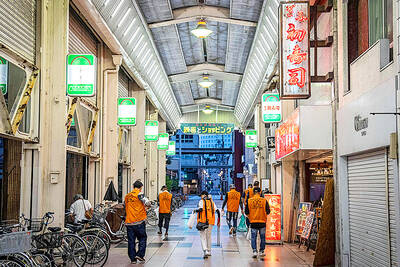
A missing fingertip offers a clue to Mako Nishimura’s criminal past as one of Japan’s few female yakuza, but after clawing her way out of the underworld, she now spends her days helping other retired gangsters reintegrate into society. The multibillion-dollar yakuza organized crime network has long ruled over Japan’s drug rings, illicit gambling dens and sex trade. In the past few years, the empire has started to crumble as members have dwindled and laws targeting mafia are tightened. An intensifying police crackdown has shrunk yakuza forces nationwide, with their numbers dipping below 20,000 last year for the first time since records
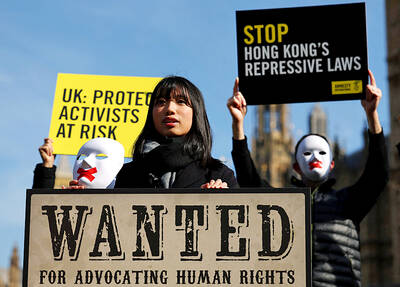
EXTRADITION FEARS: The legislative changes come five years after a treaty was suspended in response to the territory’s crackdown on democracy advocates Exiled Hong Kong dissidents said they fear UK government plans to restart some extraditions with the territory could put them in greater danger, adding that Hong Kong authorities would use any pretext to pursue them. An amendment to UK extradition laws was passed on Tuesday. It came more than five years after the UK and several other countries suspended extradition treaties with Hong Kong in response to a government crackdown on the democracy movement and its imposition of a National Security Law. The British Home Office said that the suspension of the treaty made all extraditions with Hong Kong impossible “even if
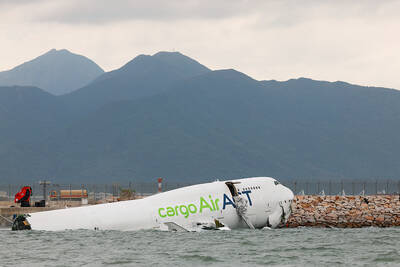
CAUSE UNKNOWN: Weather and runway conditions were suitable for flight operations at the time of the accident, and no distress signal was sent, authorities said A cargo aircraft skidded off the runway into the sea at Hong Kong International Airport early yesterday, killing two ground crew in a patrol car, in one of the worst accidents in the airport’s 27-year history. The incident occurred at about 3:50am, when the plane is suspected to have lost control upon landing, veering off the runway and crashing through a fence, the Airport Authority Hong Kong said. The jet hit a security patrol car on the perimeter road outside the runway zone, which then fell into the water, it said in a statement. The four crew members on the plane, which
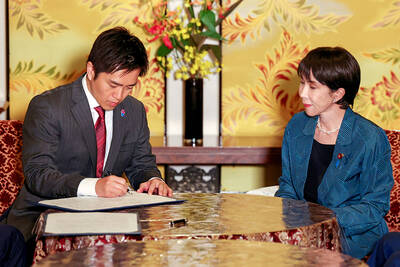
Japan’s ruling Liberal Democratic Party (LDP) and its junior partner yesterday signed a coalition deal, paving the way for Sanae Takaichi to become the nation’s first female prime minister. The 11th-hour agreement with the Japan Innovation Party (JIP) came just a day before the lower house was due to vote on Takaichi’s appointment as the fifth prime minister in as many years. If she wins, she will take office the same day. “I’m very much looking forward to working with you on efforts to make Japan’s economy stronger, and to reshape Japan as a country that can be responsible for future generations,”